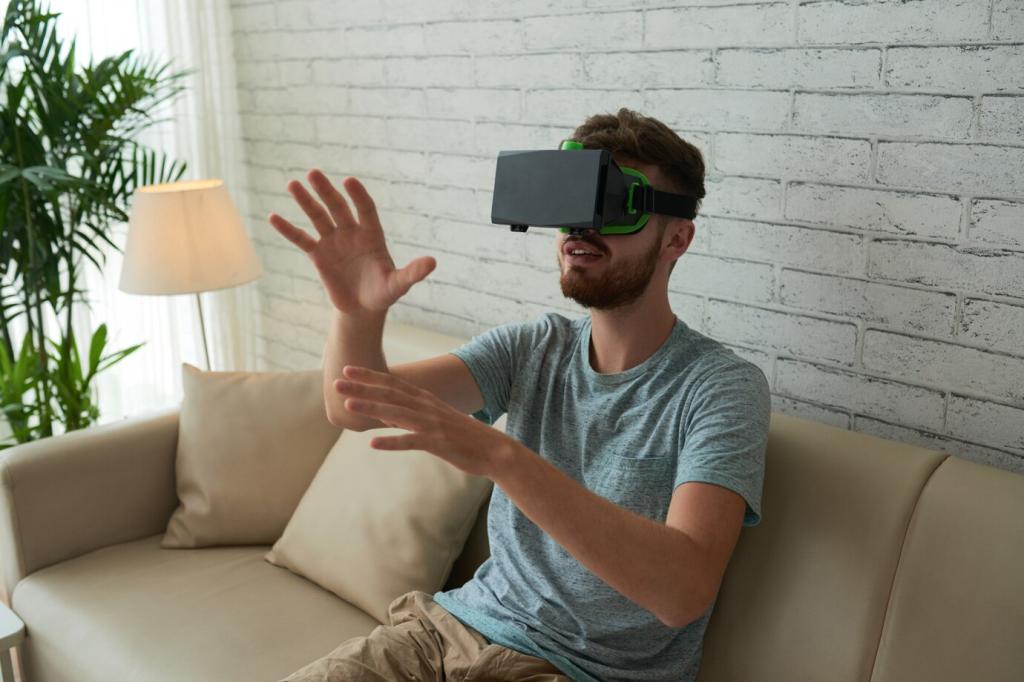
The Impact of Virtual Reality on Interior Design Processes
Virtual reality (VR) technology has revolutionized the way interior designers conceptualize, plan, and present their projects. By enabling immersive experiences and interactive visualization, VR bridges the gap between imagination and reality, allowing clients to step inside their future spaces before any physical changes occur. This transformative technology not only enhances design accuracy but also significantly improves client communication and satisfaction. As the adoption of VR accelerates, both designers and clients are discovering new ways to collaborate and achieve outstanding design solutions, ultimately elevating the standards and efficiency of the interior design process.
Enhancing Visualization and Conceptualization
01
VR allows designers to present their ideas in a truly immersive way, providing clients with a 360-degree view of their potential spaces. Unlike traditional images or sketches, VR environments respond to where the viewer looks and how they move, enabling them to explore every corner and detail. This not only makes designs more understandable but also fosters a deeper emotional connection to the project. For designers, it means feedback is more precise and pertinent, as clients can directly point out what resonates or what requires change, resulting in designs that align more closely with client expectations.
02
One of the standout advantages of virtual reality in interior design is the ability to make real-time changes within a digital model. Clients and designers can collaborate on the spot, altering elements such as color palettes, furniture arrangements, lighting schemes, and more. These instant revisions help streamline the decision-making process, dramatically reduce the time spent going back and forth, and minimize misunderstandings. The ease of making multiple iterations also encourages creative exploration, ensuring the final design is both ambitious and practical.
03
Traditional design materials like sketches and 2D plans often fall short in conveying spatial relationships and dimensions accurately to clients. VR overcomes this limitation by allowing users to physically ‘walk’ through rooms, understanding sight lines, circulation pathways, and functional layouts with unparalleled clarity. This comprehensive spatial awareness helps prevent costly errors and promotes more effective planning, as both designers and clients can anticipate potential issues and resolve them before construction begins.
Communicating complex design ideas can be challenging, especially when clients struggle to interpret plans or visualizations. Virtual reality addresses this by placing clients ‘inside’ the design proposals, offering a first-person experience that transcends language barriers or technical limitations. This shared understanding helps to bridge the traditional gap between designer intent and client interpretation, paving the way for more productive conversations and a smoother approval process.
Facilitating Communication and Collaboration
Early Error Detection
One of the most significant cost-saving aspects of virtual reality is its ability to uncover design issues before construction begins. Clients and project teams can experience and evaluate every detail, from sight lines to furniture placement, drastically reducing the chances of costly mistakes during implementation. By catching errors at the visualization stage, designers can address issues proactively, saving time and resources while ensuring a smoother construction phase.
Optimized Project Timelines
Traditional design revisions often involve lengthy cycles of feedback and adjustment, with each iteration requiring new renderings or presentations. With VR, these steps are condensed into interactive sessions where changes can be visualized instantly. This accelerates the approval process, enables rapid prototyping, and ensures that projects move forward efficiently. The streamlined workflow also frees up time for designers to focus on creativity and innovation rather than administrative tasks.
Cost-Efficient Resource Allocation
Virtual reality helps designers and clients make informed choices about materials, finishes, and furnishings without the need for costly mock-ups or sample installations. By visualizing the impact of each decision within a virtual model, stakeholders can allocate budgets more effectively and prioritize investments that deliver maximum value. This practical approach not only leads to superior design outcomes but also maximizes return on investment for all parties involved.
Previous slide
Next slide

